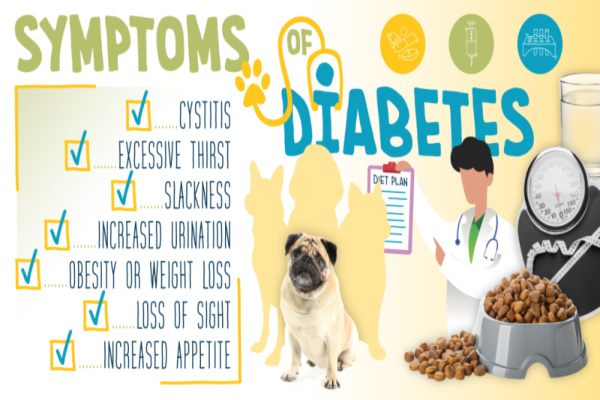November is National Pet Diabetes Month. DVM 360 wants to raise awareness about this lifelong condition affecting approximately 1 in 300 adult dogs and 1 in 230 cats in the United States, in order to ensure veterinarians provide companion animals with proper diagnosis and treatment options so they can live fulfilling lives.
Diabetes in dogs and cats keeps them from producing or utilizing insulin appropriately, which prevents the conversion of food to energy; as a result, extra sugar remains in the blood resulting in lethargy and other health-related complications. Though this disease has no cure, it can be managed with treatment and monitoring so pets can continue to thrive throughout their lives.
Risk factors for diabetes
Although canines and felines can acquire diabetes at any age, diabetic dogs are usually between 4 and 14 years and receive diagnosis from 7 to 10 years, whereas cats with diabetes are typically older than 6 years old. In dogs, diabetes occurs in females twice more than males. Additionally, a study from the Journal of the American Veterinary Association revealed that certain canine breeds were at higher risk for developing diabetes including Samoyeds, miniature schnauzers, miniature poodles, and pugs.
Another risk factor is obesity, and aging dogs and cats may develop other diseases, like canine hyperadrenocorticism, feline hyperthyroidism, pancreatitis, heart disease, kidney disease; and urinary tract and skin infections that may lead to diabetes, or that can greatly affect their response to treatment. Additionally, long-term use of medications including corticosteroids is a diabetes risk factor.
Signs of diabetes
Early diagnosis is critical to helping pets live longer, healthier lives. According to the American Veterinary Medical Association, hallmark signs of pet diabetes include the following:
- Excessive thirst and increased urination
- Weight loss (though appetite may increase)
- Decreased appetite
Cloudy eyes (particularly in dogs) - Chronic or recurring infections (eg, skin and urinary tract infections)
Diabetes diagnosis and treatment
According to DVM 360, the treatment for diabetes is typically straightforward— through a general health examination, a urine test for glucose or ketones, or a blood test that detects glucose levels. However, additional blood tests can rule out other medical conditions, and urine cultures can eliminate the possibility of a urinary tract infection.
Advise pet owners to manage their pets’ lifelong diabetes with daily doses of insulin, glucose monitoring, attention to diet and exercise, and regular veterinary checkups. The main goal of monitoring diabetes involves keeping a pet’s blood sugar near normal levels and avoiding life-threatening levels that are too high or too low. Each patient is unique, so they will require an individualized treatment plan consisting of a new diet and medications.
The Bottom Line
Diabetes is a lifelong condition, however early detection and proper treatment can allow pets to continue to lead happy lives. So the key is keeping your regular annual vet checkup appointments, and monitoring your furry friends for any changes in behaviors as they age.
—
Photo Credit: Pixel Shot / Shutterstock.com
